Cornmeal-Crusted Black Skillet Fish with Shallot Sprinkles

introduction
I had to be escorted to the stove by my husband and shown how to cook this dish! This because my first fish-fry excursion was, shall we say, underwhelming. I had been thinking, “Fish, cornmeal, oil, yada yada, yada. How is this even a recipe?” But after Glenn cooked it for me, I said, “Wow! Are there seconds?”
This really is a recipe—a really great one, in fact, simply by virtue of its innocence, which is recipe simple, and technique critical. Accompanied by full-on cultural bonafides, all it needs are a few good ingredients and a hot pan. Seriously, that’s about it. The cornmeal, with its crunchy coating and sweet, toasted corn flavor, gets out way ahead of plain flour in appeal real quick.
Pan frying is an elegant way of introducing food to fat. Unlike a food crematorium, or deep fryer, its fat is less abundant, less atomic, and less destructive to surface molecules. The protective carapace or breading can thus be thinner, crisper, and rather more appealingly rustic. The finished fish is crisp, casual, and wholesome—and swooningly enhanced by the lightly curried, crisp shallot sprinkles.
Cooking Remarks
If your oven has a convection function, by all means, use it to dry the shallots. They seem to welcome air circulation without scorching heat—but then, who doesn’t? If you have a food dehumidifier, we consider you a pro already. If you have a regular oven, no worries, the process will simply take longer.
One secret to the success of this technique is the thickness of the fish. We found that fillets between ½ and 1 inch thick perform best in a cornmeal dredge pan fry.
equipment mise en place
For this recipe, you will need a baking sheet; parchment paper; a sharp paring knife; a small bowl; a shallow baking dish; a large, well-seasoned cast-iron skillet; and a thin metal spatula.
-
for the shallot sprinkles:
-
4ounces (3 or 4 large) shallots
-
¼teaspoon fine sea salt
-
⅛teaspoon cayenne pepper
-
¼teaspoon curry powder (optional)
-
½teaspoon olive oil
-
1tablespoon finely chopped flat-leaf parsley
-
-
for the fish:
-
1 ½pounds skinless white fish fillets (such as black bass, sea bass, hake, flounder, tilapia, or cod), between ½ and 1 inch thick, in 4 evenly sized pieces
-
1juicy lemon, cut in half
-
5ounces (1 cup) Anson Mills Coarse Yellow Cornmeal
-
Olive oil for frying
-
Fine sea salt and freshly ground black pepper
-
-
for serving:
-
2 to 3tablespoons unsalted butter, melted and warm
-
Lemon wedges
-
-
Generously sprinkle the surface of the fillets with salt and pepper, and then place them one by one seasoned-side down in the cornmeal. Generously sprinkle the second sides with salt and pepper. Firmly press down on the fillets so that the cornmeal adheres to the fish. Turn the fillets and coat the second sides in the same way (fig. 6.1).
-
Meanwhile, turn the cornmeal into a shallow baking dish and distribute it into an even layer. Line a plate with paper towels and set it near the stove. Pour olive oil into a large, well-seasoned cast-iron skillet to a depth of about ¼ inch and set the skillet over high heat if your fillets are closer to ½ inch thick or just slightly lower than high heat if they’re on the thicker side.
-
Make the shallot sprinkles: Adjust the oven rack to the middle position and heat the oven to 200 degrees. Line a rimmed baking sheet with parchment paper.
-
With a sharp paring knife, peel the shallots, cut each in half lengthwise, and then cut crosswise into very thin, even slices (fig. 2.1). Turn the slices into a small bowl. Sprinkle with the salt, cayenne, and curry powder (if using), and drizzle with the olive oil. Using a fork, toss the shallots until evenly coated and the layers have separated. Turn the shallots onto the prepared baking sheet and distribute into a thin, even layer with the fork (fig. 2.2). Bake until the shallots are brittle, dry, and golden, about 2d hours, stirring and redistributing into a thin layer two or three times. Let cool to room temperature.
-
Transfer the shallots to a food processor and process to coarse crumbs, about 15 seconds. Turn the shallots into a small bowl—you should have about ¼ cup—add the parsley, and toss together (fig. 3.1). Set the shallot sprinkles aside.
-
Cook the fish: Dry the fish fillets on paper towels. Place them in a single layer on a large plate and squeeze the juice from a lemon half onto the fillets. Turn the fillets and squeeze over the second lemon half. Allow the fish to cure in the lemon juice until the flesh begins turn slightly opaque, about 5 minutes (fig. 4.1).
-
When the oil shimmers and is just barely beginning to smoke (on an instant-read thermometer, it should register about 385 degrees if you are cooking thicker fillets or about 400 degrees if you have thinner ones), lower the coated fillets one by one into the skillet; they should immediately sizzle (fig. 7.1). Fry without disturbing for 2 minutes for thinner fillets or 3 minutes for thicker fillets, shaking the pan a little to make sure the fish isn’t sticking (it won’t have if the oil was hot enough). Use a thin metal spatula to gently lift gently a fillet to check the color of the crust; if it appears to be darkening too quickly, lower the heat just slightly. When the fillets are deep golden brown (fig. 7.2), turn them carefully one by one with the spatula and continue to cook until the second sides are deep golden. The total frying time should be not greater than 6 minutes.
-
Using the spatula, transfer the fillets one by one from the skillet to the paper towel–lined plate to drain briefly (fig. 8.1). Place the fillets on a warmed platter or warmed individual plates, spoon the melted butter over the fish, and sprinkle with the shallot sprinkles. Serve with lemon wedges.
-
-
1.1
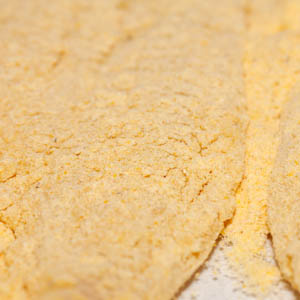
-
-
-
4.1
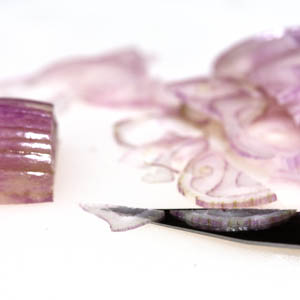
-
4.2
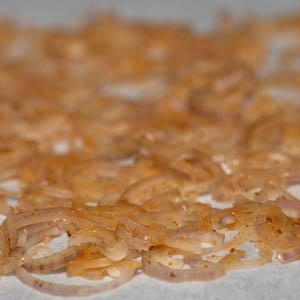
-
-
-
5.1
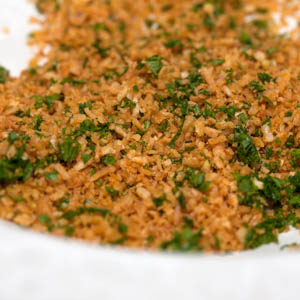
-
-
-
6.1
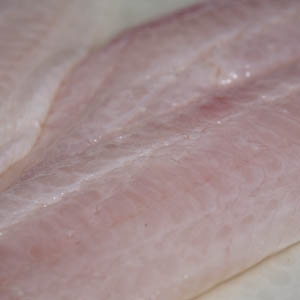
-
-
-
7.1
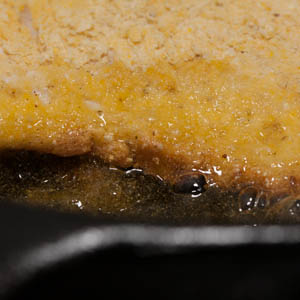
-
7.2
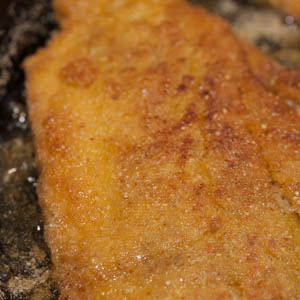
-
-
-
8.1
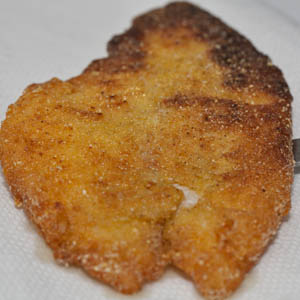
-